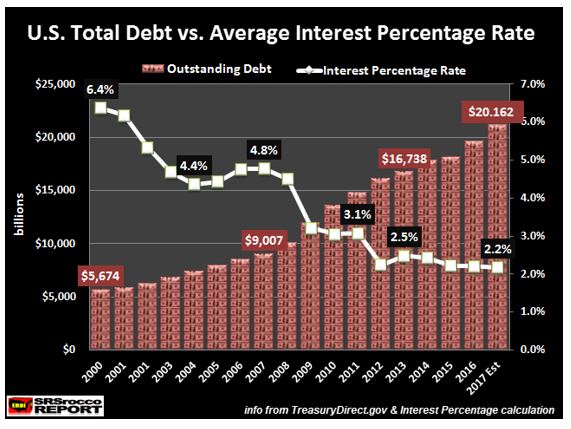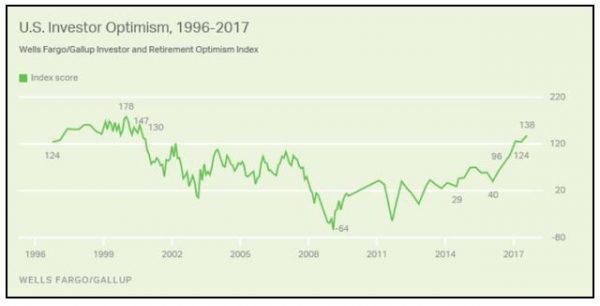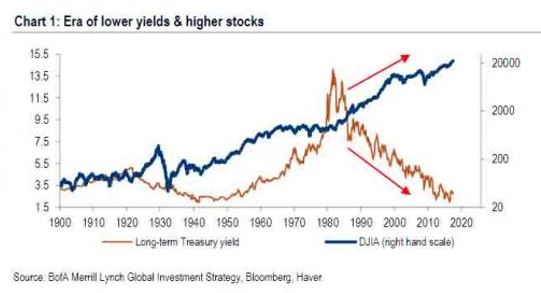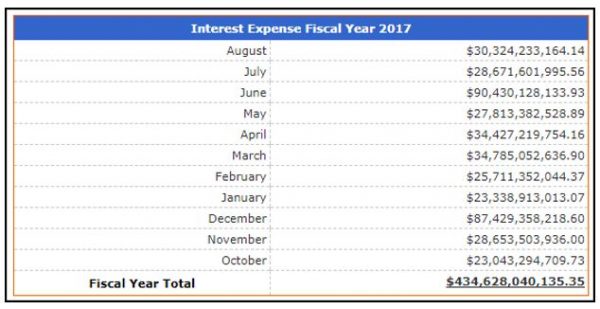 |
$20 TRILLION.
$20.162 billion to be exact. That is where our national debt now stands after Congress extended the debt ceiling. And it is sure to rise in December when we bump into the debt ceiling again.
I know that I am hopelessly old-fashioned. But there is a limit to how much debt you — individuals, businesses or governments — can take on before it crushes you and takes you to the poorhouse.
This raises a host of urgent questions:
1. With a GDP-to-debt ratio of 107%, are we already over the limit?
2. What if you add in government obligations for Social Security, Medicare and Veterans’ benefits (at least another $100 trillion)?
3. What will be the true consequences of this debt pile-up and, more importantly, WHEN will they strike?
In a live Q&A session (tomorrow at 2PM Eastern) our founder, Martin Weiss, will give you the answers. He will be joined by Sean Brodrick with their latest forecasts for gold, silver, the Dow and long-term bonds.
Plus they will also answer any other question you may have.
The 1-hour online session is free for our readers. But to attend, you have to register, and the deadline is today! So be sure to sign up here while there’s still time.
Another Big Danger: Complacency
I presume you’re already well aware of these dangers. But most investors don’t seem to care. Or maybe they don’t know.
Indeed, the latest Wells Fargo/Gallup Investor and Retirement Optimism Index came in at 138. It’s the highest reading since September 2000.
- This is almost 100 points higher than as recently as February 2016. (That’s the largest increase in the history of the index.)
- 61% say now is a good time to invest in the stock market.
- 68% expect the stock market to go even higher in 2018.
- 25% say they are “very optimistic,” the highest-ever reading. By the way, only 11% were “very optimistic” a year ago.
One statistic that I found very interesting (or troublesome) was that retirees are more-optimistic about the stock market than non-retirees.
And that optimism has paid off. The stock market hit new, all-time highs last week. That was largely due to central bankers’ purchases of financial assets (stocks and bonds).
In the first six months of 2017, central bankers spent $1.96 trillion on financial assets purchases and added $15.6 trillion to central bank balance sheets.
In the U.S., the Federal Reserve now owns more than 14% of the U.S. total public debt.
Those ballooning balance sheets don’t come without cost.
In fiscal 2016, our Treasury Department paid out $432 billion in interest on our national debt. And it’s on track to pay out a record high of $460 billion in 2017.
Lucky for us, the government is making these huge interest payments in a low-interest-rate environment. The average rate on U.S. Treasury debt today stands at about 2.2%.
What would happen if interest rates rose to a more “normal” level?
Example: If interest rates backed up to 6.2%, which is where they were in 2000, the annual interest payment on the current debt would nearly triple to $1.3 trillion.
 In short, the federal government simply can’t afford normal interest rates. That is one of the primary reasons why Ben Bernanke and now Janet Yellen have been so in love with near-zero interest rates and quantitative easing.
In short, the federal government simply can’t afford normal interest rates. That is one of the primary reasons why Ben Bernanke and now Janet Yellen have been so in love with near-zero interest rates and quantitative easing.
What does all this mean to investors?
First, don’t expect the Federal Reserve to significantly raise interest rates anytime soon, no matter what happens to the inflation rate.
In fact, the Bureau of Labor Statistics (who calculates CPI and PPI) will continue to “massage” the inflation number with substitutions and what the BLA calls “hedonistic adjustments” to keep the official headline numbers low.
Second, I don’t think the bull market can continue without monetary steroids. So the Federal Reserve’s promise to shrink its balance sheet could very well trigger a long-overdue correction. A very painful correction.
Lastly, central bank experiments with negative interest rates, quantitative easing, and financial asset purchases are unprecedented. And nobody knows for sure how these grand experiments will end.
But the one consequence that I am very confident will happen is that the next bear market will be extremely painful. And it will last longer than investors expect.
So, I strongly suggest you consider one of these three strategies:
Boost Your Cash Allocation. If you are 100% invested in the stock market, I suggest you consider reducing your exposure and increasing your allocation to cash. I recommend at least a 25% allocation to cash.
Create an Escape Plan. Contrary to what Wall Street wants you to believe, “buy, hold and pray” is not a strategy you want to follow. You will get clobbered when the next bear market comes around. (And one always comes around …) At a minimum, I suggest you use simple automatic sell strategies, such as protective stops and/or simple moving averages.
Profit From Pain. If you have some speculative capital that you can allocate to a more aggressive strategy, I suggest you look at buying portfolio insurance. By that I mean buying put options and/or inverse ETFs that go UP in value when the stock market is going DOWN in value.
In fact, members of my Calendar Profits Trader are doing just that. You should consider a risk-free trial.
Don’t let the stock market’s extended rally and new highs blind you to the pain that bear markets bring. Central bankers have blown up the stock market bubble to dizzying heights.
And those without a plan are going to see all those profits — as well as a big chunk of their starting capital — disappear. Don’t let that happen to you.
Best wishes,
Tony Sagami




{ 5 comments }
When you say increase cash allocation – what exactly are you talking about, govt. bonds?
Or buying other currencies or precious metals?
is there some reason why you didnt add the trillion+++ in student loan debt and since the taxpayers are now on the hook for any fannie mae debt ( FNMA ) and freddie mac debt ( FMCC ) please show true guestimates of external debt to GDP ratio thanks
Your second sentence is wrong. Should be trillion.
If the Bubble Bust, what other than a CONFEDERATe DOLLAR be worth a roll of pins?
When he says increase cash allocation – does that mean hard cash in a safe ?? Does anyone have an insight as to when the Crash will come ?? People will flock to Gold !!